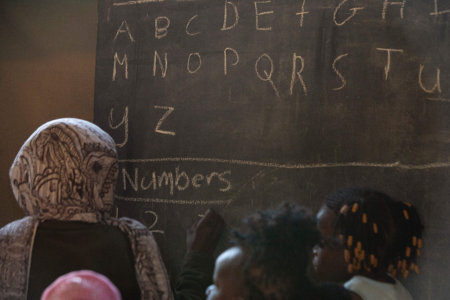
During the COVID-19 lockdowns, stories have been shared of schools delivering food parcels, phoning struggling families and providing on-site care for the children of key workers. We have seen many schools go much further than their statutory role of educating and safeguarding their pupils, sometimes acting as the most important support institution for whole neighbourhoods. This broader school role is the thinking behind “cradle-to-career” schools.
Their core approach involves providing a pipeline of support from birth to early adulthood, combined with activities which target different aspects of young people’s lives. This could include free antenatal classes and social groups for parents, youth groups, mentoring and career advice.
Cradle-to-career school designs are the latest in a long line of attempts to coordinate schools with other local services, in order to tackle the causes of social and educational inequality. I carried out research in one cradle-to-career school in west London during my PhD fieldwork. There are other examples across the UK and in North America.
Schools cannot address inequality on their own, but neighbourhoods often lack local, coordinated support systems. Cradle-to-career school designs are a bold attempt to go beyond a school’s typical role. They join up local services to improve prospects for young people and their communities.
How to study and remember, according to famous people.https://t.co/rsEwbG3CPR pic.twitter.com/YSYU1VE4is
— Study International (@Study_INTNL) December 2, 2020
A new vision for schools
Poor educational outcomes can have a lifelong impact. People with less education tend to have worse health, lower income and limited job opportunities. But while schools are held responsible for academic success, many young people face social and economic challenges beyond the school gates which affect their ability to learn.
Research suggests that causes of inequality – such as poverty, social exclusion or social isolation – are tightly interconnected. This makes it extremely difficult for one specific policy area or organisation to deal with them effectively.
Cradle-to-career school designs can be tailored to local contexts, matching the complexity of neighbourhood challenges. The services they provide, such as early years education and parental employment support, aim to improve a range of outcomes relating to health, education, housing, and material wellbeing.
Rather than work alone, schools form partnerships with local providers across different policy areas, including early years education, social care and health. New provision is developed where necessary. This allows for a joined-up approach to local challenges.
ICYMI: The mayor told reporters the reopening was possible “because we have so much proof now of how safe schools can be.” @NYCMayor https://t.co/QQQcSj843F pic.twitter.com/6TDdIlLcZg
— Study International (@Study_INTNL) December 1, 2020
Community links and cradle-to-career schools
Cradle-to-career initiatives are also deeply connected to their local communities. They allow close relationships to form between schools and their neighbourhoods, leading to coordinated and flexible responses to local challenges. These can go far beyond the capacity of a national-level initiative when it comes to engaging with local issues.
Some longstanding examples have become influential in recent years. Harlem Children’s Zone in New York was arguably the first – and is certainly the best known. It inspired the US Department of Education’s Promise Neighbourhood initiative, which aims to improve outcomes for young people by providing funding for cradle-to-career programmes in under-resourced communities. Strive is the other major US cradle-to-career programme, operating in 30 states.
In the UK, emerging cradle-to-career initiatives include Right to Succeed, The North Manchester Family Zone and Reach Children’s Hub.
To avoid adding to schools’ already heavy workload, these organisations have created separate roles to focus on developing the schools’ broader support. Their governance models and funding structures vary, but underpinning every design is the view that children experiencing complex difficulties have the best chance of success if they receive well coordinated support from birth to adulthood.
If cradle-to-career designs prove successful, though, there is a risk that local community partnerships are seen as the solution to poverty and inequality. In reality, they can only ever be part of a wider, strategic response. On their own, they could become a form of social first aid, helping to ease the worse harms of inequality while the root causes remain unaltered.
Whatever their wider political consequences, cradle-to-career designs help to show that schools can be more than standalone educational institutions. COVID-19 has not created new social or economic difficulties – it has intensified existing ones. The role many schools have played through the pandemic in tackling these difficulties has shown how well positioned they are to address communities’ needs.
Whether acting as templates for a new, more equal education system and society, or just as a measure to ease the effects of inequality and poverty, cradle-to-career schools offer a blueprint for a new type of school, which maximises their role in supporting their neighbourhood.![]()
Victoria Hirst, PhD Candidate, Institute of Education, University of Manchester
This article is republished from The Conversation under a Creative Commons license. Read the original article.










